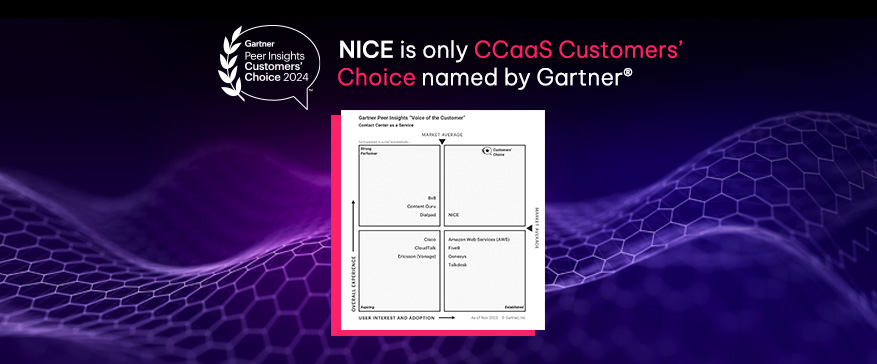Reducing agent churn with AI tools refers to using artificial intelligence to identify risk factors, improve job satisfaction, personalize training, and support agents in real time to lower turnover in contact center environments. AI agents utilize real-time data and advanced machine learning to create personalized retention strategies that proactively address customer needs and preferences, ultimately boosting loyalty and operational efficiency. AI agents adapt to changing customer behaviors and industry demands, leveraging real-time data and machine learning for proactive customer engagement, which enhances operational efficiency and improves customer loyalty.
Agent churn is a long-standing challenge in the industry, often caused by stress, lack of support, burnout, and repetitive tasks.
AI helps by monitoring behavior and sentiment, offering proactive coaching, reducing workload through automation, and predicting attrition before it happens. These capabilities allow contact centers to address issues early, create a better work experience, and retain top talent, which collectively contribute to maintaining and driving sustainable growth in competitive markets.
High agent churn leads to high recruiting and training costs, inconsistent service, and lower morale. Using AI tools helps organizations build a more stable, engaged, and effective workforce, giving them a competitive edge by ensuring increased customer loyalty and a strong brand reputation.
Understanding Agent Churn and its Impact
Agent churn refers to the rate at which customer service agents or representatives leave their positions within a company. High agent churn can negatively impact brand loyalty, leading to decreased customer satisfaction and loyalty. This phenomenon can have a significant impact on a company’s operational efficiency, customer satisfaction, and overall revenue. High agent churn rates can lead to increased recruitment costs, decreased productivity, and potential disruptions in service quality. Moreover, agent churn can negatively affect customer satisfaction and loyalty, ultimately leading to a loss of repeat business and revenue. Addressing agent churn is crucial for maintaining a stable and effective workforce, ensuring consistent service quality, and fostering long-term customer relationships.
The Role of AI in Agent Churn Reduction
Artificial intelligence (AI) can play a crucial role in reducing agent churn by identifying at-risk agents, providing personalized coaching and feedback, and optimizing processes. AI-powered analytics tools can utilize machine learning and natural language processing to analyze large datasets, including agent performance metrics, customer interactions, and sentiment analysis, to predict agent churn. By leveraging AI, companies can proactively address factors contributing to agent churn, such as burnout, lack of recognition, or inadequate training, and implement targeted retention strategies to improve agent satisfaction and reduce turnover rates. This proactive approach helps create a more supportive work environment, enhancing overall operational efficiency and agent loyalty.
Leveraging Customer Data for Churn Predictions
Leveraging customer data is crucial for making accurate churn predictions. By collecting data from various sources such as customer interactions, website interactions, and social media, businesses can gain valuable insights into customer behavior. Analyzing this data helps identify patterns and trends that indicate a high risk of churn. Machine learning algorithms can process large volumes of customer data to predict future behavior, allowing businesses to take proactive measures to retain customers.
Customer data can be used to create personalized retention strategies that target at-risk customers. By understanding customer preferences and behavior, businesses can tailor their approaches to meet individual needs, thereby reducing churn rates. Additionally, customer data can reveal opportunities for upselling and cross-selling, further enhancing customer retention. By leveraging customer data, businesses can stay ahead of the competition, improve customer retention, and foster long-term customer loyalty.
Core Capabilities of AI Tools That Reduce Agent Churn
Predictive Attrition ModelingAI analyzes behavioral data, schedule adherence, performance trends, and even sentiment in written or spoken interactions to identify agents at risk of leaving. High agent churn can negatively impact customer retention and overall revenue. By highlighting early warning signs such as declining engagement, missed KPIs, or sudden changes in behavior, managers can intervene with support or coaching before churn occurs.
Real-Time Agent Assist and GuidanceAI-driven agent assist tools provide suggestions, next best actions, and knowledgebase content in real time during customer interactions. This reduces cognitive load, increases confidence, and helps new or struggling agents feel supported. It also shortens training time and improves first contact resolution, contributing to agent success and reducing customer churn.
Automated and Fair Workload DistributionAI-based routing systems help distribute tasks based on agent skill, capacity, and historical performance. This avoids overloading high performers while ensuring balanced workloads across the team. When agents feel their effort is recognized and workloads are fair, satisfaction improves and burnout is reduced.
Personalized Coaching and FeedbackAI automatically analyzes every customer interaction, scoring them for quality, tone, empathy, and compliance. This enables managers to deliver data-driven coaching and recognition tailored to each agent’s strengths and weaknesses. Rather than random spot checks, supervisors gain full visibility into where agents need support and where they are excelling.
Performance Insights and Goal AlignmentAgents gain visibility into their own performance through dashboards and scorecards powered by AI. This transparency motivates improvement, gives agents a sense of control, and encourages healthy competition when goals are clearly aligned. AI can also suggest training modules based on specific performance gaps.
Intelligent Scheduling and FlexibilityAI-powered workforce management tools can generate agent-friendly schedules by incorporating preferences, availability, and historical performance. Agents are more likely to stay when their shifts align with their life outside of work. Flexible scheduling is especially effective in reducing attrition among part-time and remote workers.
Automated QA and Recognition ProgramsAI can review and score every interaction, not just a random sample. This means high-performing agents receive more consistent recognition, while those needing coaching are identified faster. Fair, objective evaluation leads to more equitable treatment and stronger engagement across the board.
Sentiment and Stress DetectionNatural language processing can identify signs of stress, fatigue, or frustration in conversations. If an agent is consistently exposed to high-stress interactions or shows signs of burnout, AI can flag this to supervisors, who can then adjust schedules, offer support, or reassign tasks to help the agent recover.










